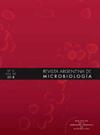Identificación y sensibilidad antibiótica de aislamientos de Aeromonas spp. en un Hospital Universitario de la ciudad de Buenos Aires
IF 2.1
4区 生物学
Q4 MICROBIOLOGY
引用次数: 0
Abstract
Aeromonas spp. are opportunistic pathogens that cause both intra- and extraintestinal infections. The objective of this work was the phenotypic and genotypic characterization of a collection of Aeromonas strains, in addition to determining their sensitivity to different antimicrobials. Thirty seven isolates were analyzed. 54% were of intra-abdominal origin, 22% from skin and soft tissues, 19% from the bloodstream, among other less frequent sites. By amplification and sequencing of the gyrB gene, which was considered the reference method, the following were identified: 37,8% as species of the Aeromonas hydrophila complex, 32,4% as species of the Aeromonas veronii complex, and 29,7% as species of the complex Aeromonas caviae. Identification by traditional biochemical tests presented a better correlation with molecular identification than mass spectrometry (MALDI TOF MS). Regarding antibiotic sensitivity, cefotaxime, ceftazidime, cefepime, piperacillin-tazobactam, trimethoprim-sulfamethoxazole, ciprofloxacin, amikacin, gentamicin and nitrofurantoin showed activity on more than 80.0% of the isolates tested. The sensitivity and specificity of the phenotypic methods to determine the presence of carbapenemases in relation to the detection of the cphAgene, the reference method, was 60,9% and 100%, respectively, for the colorimetric assay (Blue Carba), and of 91,3% and 50,0% respectively, for the modified Hodge test. The overall resistance to colistin was 32,4%. The automated method showed a very higher error (VME) of 16,2%, while the rapid colorimetric screening method (CRTc) showed an excellent correlation (VME 0%) with the reference method, broth microdilution.
[布宜诺斯艾利斯某大学医院气单胞菌的鉴定及抗生素敏感性]。
气单胞菌属是机会致病菌,可引起肠内和肠外感染。这项工作的目的是收集气单胞菌菌株的表型和基因型特征,除了确定它们对不同抗菌素的敏感性。分析了37株分离株。54%来自腹腔,22%来自皮肤和软组织,19%来自血液,以及其他不太常见的部位。作为参考方法,通过对gyrB基因的扩增和测序,鉴定出37.8%为嗜水气单胞菌复合体,32.4%为维罗氏气单胞菌复合体,29.7%为洞穴气单胞菌复合体。与质谱法(MALDI - TOF - MS)相比,传统生化试验与分子鉴定的相关性更好。在抗生素敏感性方面,头孢噻肟、头孢他啶、头孢吡肟、哌拉西林-他唑巴坦、甲氧苄啶-磺胺甲恶唑、环丙沙星、阿米卡星、庆大霉素和呋喃妥英对80.0%以上的分离菌有活性。比色法(Blue Carba)测定碳青霉烯酶存在的表型方法对参比法cphAgene检测的敏感性和特异性分别为60%、9%和100%,改良Hodge试验的敏感性和特异性分别为91.3%和50.0%。对粘菌素的总耐药率为32.4%。自动比色法与对照法(肉汤微量稀释法)具有较高的误差(VME),为16.2%;快速比色法与对照法(CRTc)具有良好的相关性(VME为0%)。
本文章由计算机程序翻译,如有差异,请以英文原文为准。
求助全文
约1分钟内获得全文
求助全文
来源期刊

Revista Argentina de microbiologia
MICROBIOLOGY-
CiteScore
3.30
自引率
0.00%
发文量
46
审稿时长
>12 weeks
期刊介绍:
La Revista Argentina de Microbiología es una publicación trimestral editada por la Asociación Argentina de Microbiología y destinada a la difusión de trabajos científicos en las distintas áreas de la Microbiología. La Asociación Argentina de Microbiología se reserva los derechos de propiedad y reproducción del material aceptado y publicado.
 求助内容:
求助内容: 应助结果提醒方式:
应助结果提醒方式:


